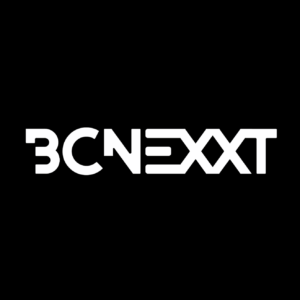Veset – Keeping content secure when using cloud playout
Mārtiņš Magone, CTO, Veset
Getting content delivery right is a top priority for broadcasters and media providers, with security being a critical, non-negotiable aspect. Broadcasters are increasingly turning to cloud playout to manage the complexities of delivering content to a diverse range of platforms and devices, and so it’s critical that cloud playout systems operate to the highest security standards. Not only do broadcasters need to protect their content and channels from unauthorized access, cyber-attacks and data breaches, but these security threats are constantly evolving as attackers adapt and seek to exploit different vulnerabilities in broadcast systems. And so, for broadcasters wanting to use cloud playout, the inevitable question arises: how can they ensure their content remains secure?
Managing evolving threats
Broadcasters need to keep content secure as it moves through the media supply chain to prevent it from being accessed by individuals without permission before it is broadcast or delivered to the end user. The consequences of failing to do this are significant, from major revenue losses to reputational and brand damage. Content needs to be kept secure while in storage and also during transport, feeds need to be protected from being captured and streamed without authorization, and Pay-TV channels need to be protected to prevent them from being made available using illegal decoders or decryption keys, or on prohibited platforms.
Additionally, measures need to be in place to protect TV channels from being hijacked and replaced with inappropriate, harmful or fake content. This has happened many times over the years and has even happened recently. Earlier this year, a TV streaming service in the UAE was reportedly hijacked by state backed Iranian hackers to broadcast a deepfake newsreader reporting on the war between Israel and Hamas. And in May, hackers reportedly hijacked at least fifteen Ukrainian TV channels and replaced them with a broadcast of the Russian Victory Day parade that took place in Moscow.
As technology continues to evolve, so do the threats to content security.
Criminals are constantly developing new tactics to bypass security measures, making it an ongoing challenge for broadcasters and service providers to stay ahead. Broadcasters must ensure that their security measures are robust enough to withstand new and emerging threats by employing a range of security measures.
Adopting a multilayer approach
To ensure that both content and channels remain protected, broadcasters need to ensure robust security measures are in place. This typically means taking a multi-layered approach to security and implementing a variety of tools and techniques including encryption, access control systems and Digital Rights Management (DRM) tools. Encryption is key to protecting content throughout the entire process, ensuring that in the event that content is intercepted, it can’t be accessed or used by unauthorized parties. Strong access control mechanisms are also essential, allowing broadcasters to ensure that only permitted personnel can access, modify, or broadcast content. This includes the use of multi-factor authentication (MFA) and user-specific permissions. DRM uses tools and technology to control access to copyrighted material and enables copyright holders to manage what users can do with their content, such as preventing editing, saving or sharing content.
Monitoring, whether automated or manual, is another important tool – this time to help identify when security measures have been breached. Some organizations are also exploring the use of AI-driven tools and real-time monitoring to help identify vulnerabilities, security breaches and illegal streams.
It’s also important to have a robust disaster recovery plan in place so that in the event of a security breach resulting in service interruption or loss, broadcasters can quickly switch to the backup system so that channels and services can continue uninterrupted, while the breach is investigated and acted upon. Cloud-based playout solutions offer a highly cost-effective and scalable option for disaster recovery, enabling broadcasters to keep channels on air even in the face of significant disruptions. In the event of an outage, cloud-based backup systems can be deployed quickly providing broadcasters with the flexibility to respond to disruptions in real time.
Understanding why cloud playout is secure

Cloud playout offers significant security advantages over traditional on-premise playout systems precisely because it is based in the cloud. The security measures employed by major cloud providers such as Amazon Web Services and Microsoft Azure are incredibly advanced. These providers invest heavily in building secure infrastructures that meet the stringent security requirements demanded by the financial sector, defense organizations, and other high-sensitivity industries. This makes cloud-based working inherently secure, and provides a level of security that is difficult to achieve in on-premise or private infrastructures.
Cloud providers employ multiple layers of security, including advanced encryption, strict access controls, and constant monitoring to detect and mitigate potential threats. So, whether content is stored in the cloud, transported using a transport service for live video such as AWS Elemental MediaConnect, or distributed using a content delivery service (CDN) such as Amazon CloudFront, it is kept secure. When using cloud-based solutions, broadcasters can be confident that their content remains secure throughout its journey from contribution to distribution to the end user.
Prioritizing security
One way to ensure that cloud solutions and services, including cloud playout, operate to the highest level of security is by ensuring that only cloud tools and services certified to recognized security standards such as ISO 27017 are used. Cloud playout solutions should employ robust security measures including encryption and access control and should be regularly updated to ensure that systems are continually protected from evolving threats. Additionally, training for playout operators and other associated personnel is also essential to minimise the risk of human error, which can be the weakest link in a security system.
Maintaining content and channel security is an ongoing battle and broadcasters need to arm themselves with the best weapons possible. The benefit to using cloud playout is that broadcasters have access to some of the most advanced security measures available today. By prioritising security and leveraging the tools and features offered by cloud providers and solutions, broadcasters can safeguard their content and channels, ensuring that they continue to deliver uninterrupted, high-quality services to viewers.
- Digital Transformation
- Data Privacy & Management
- Publish
- Cloud & Virtualization
- Security (e.g. Cyber, Encryption, Conditional Access etc)









